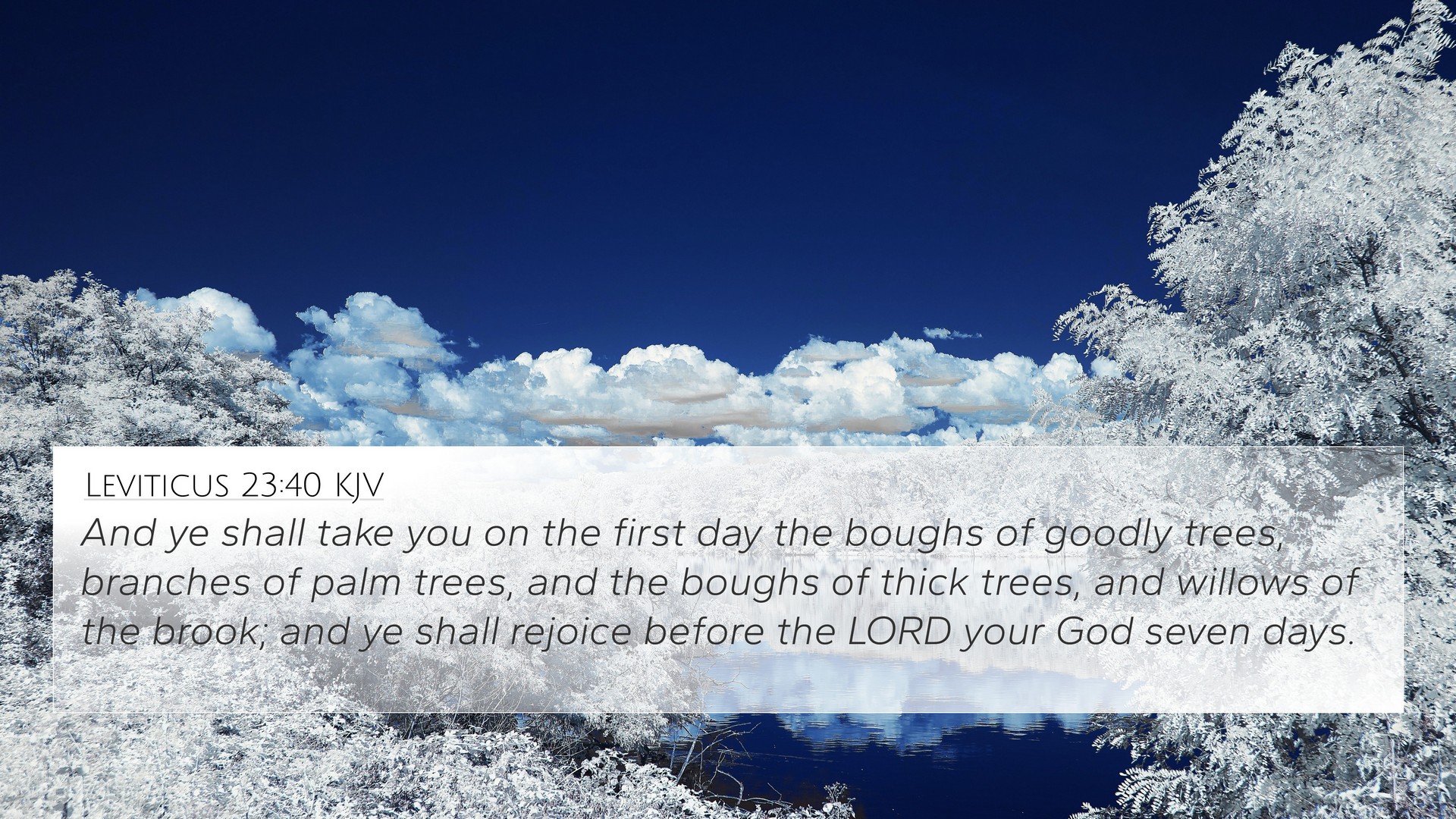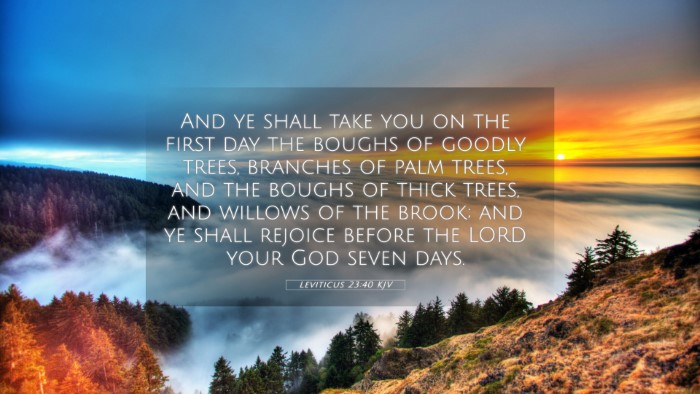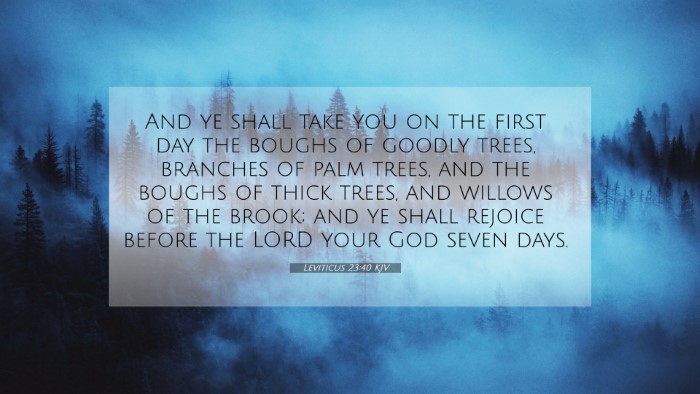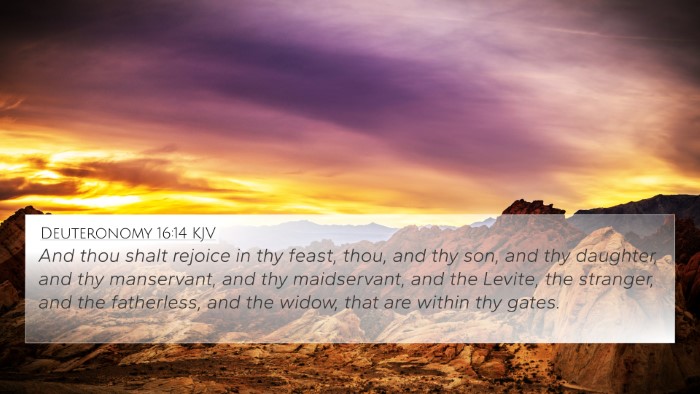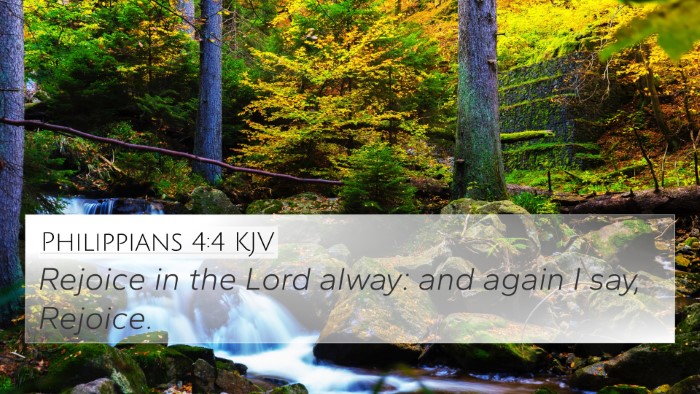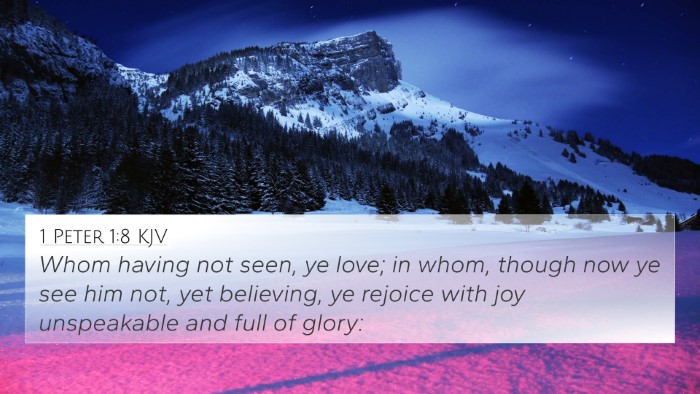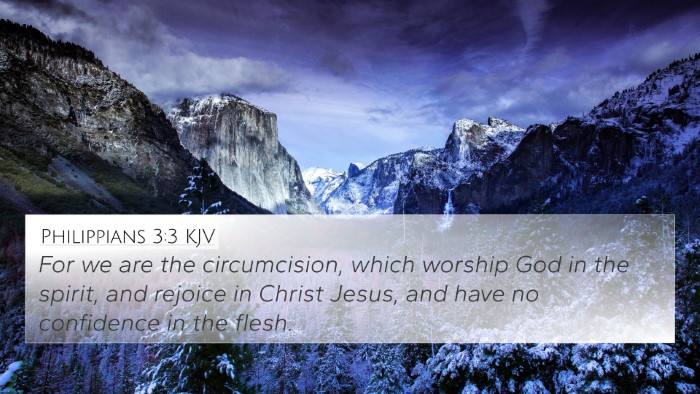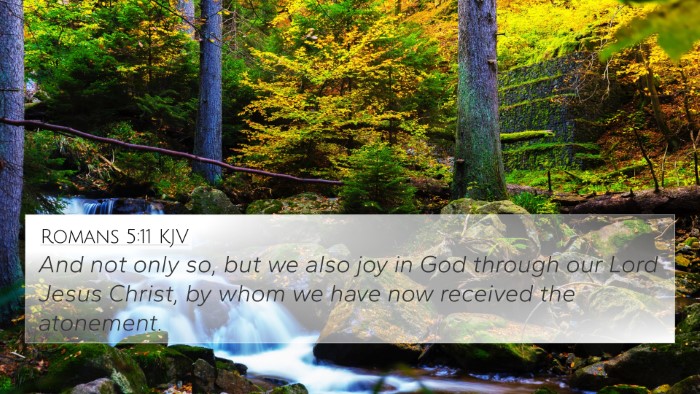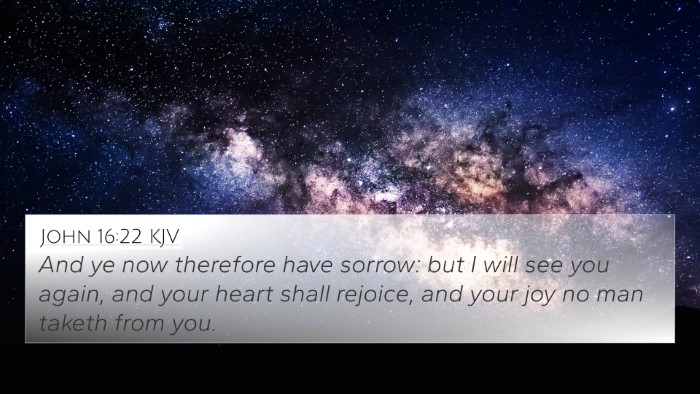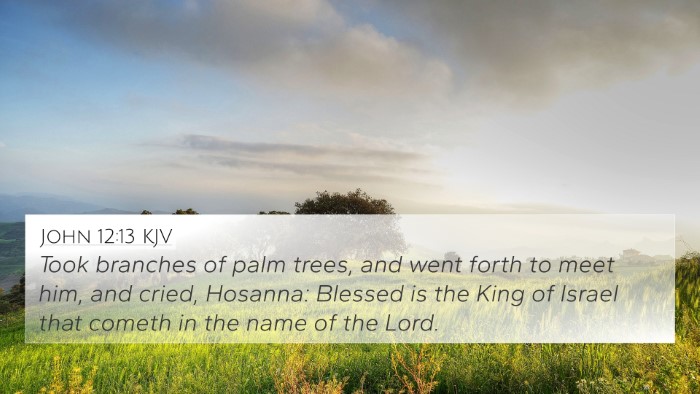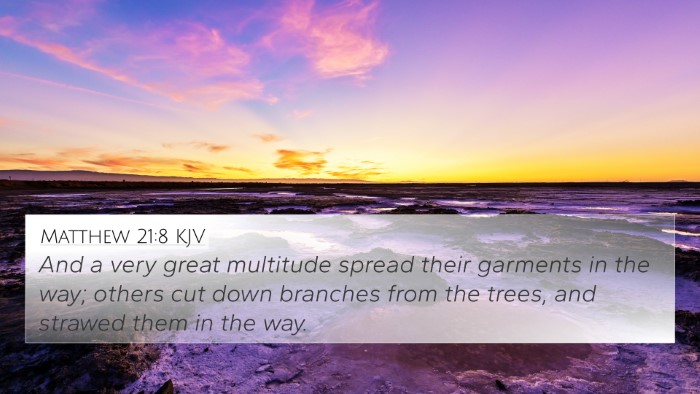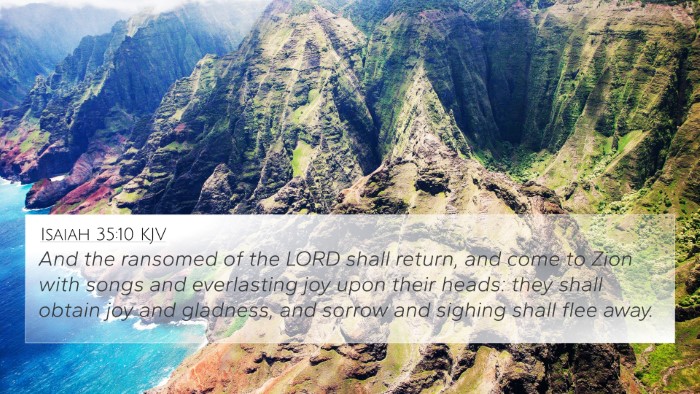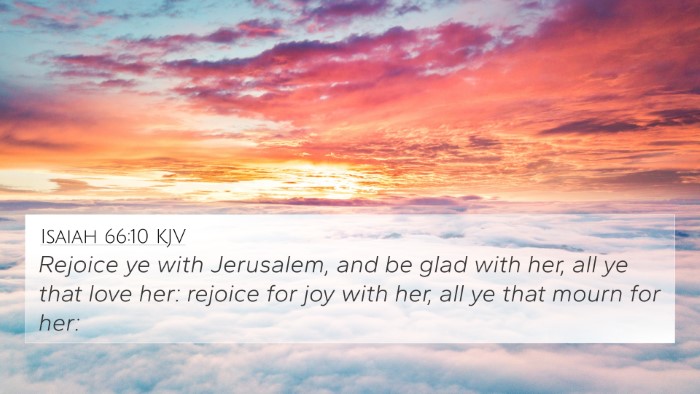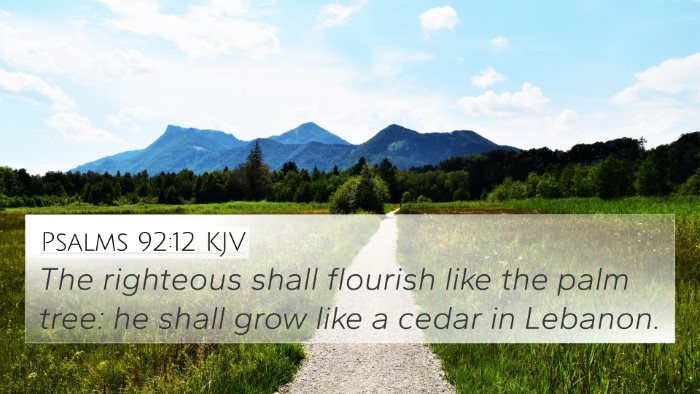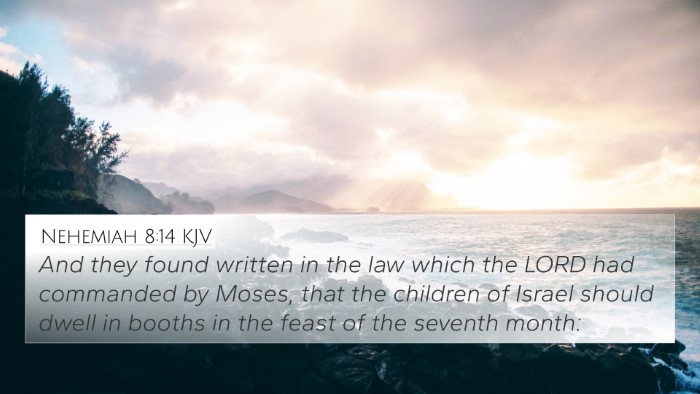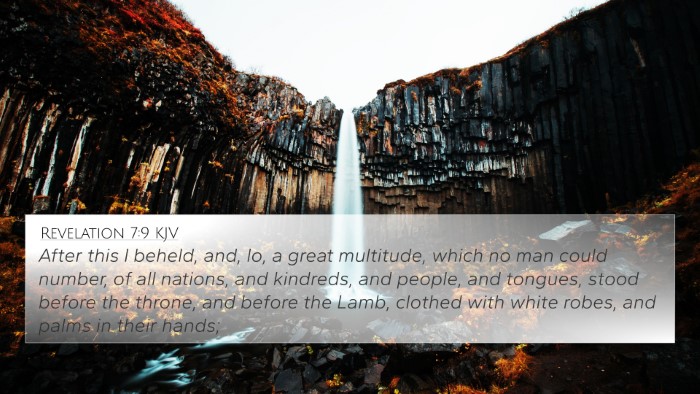Understanding Leviticus 23:40
Verse Reference: Leviticus 23:40 states, “And you shall take for yourselves on the first day the fruits of beautiful trees, branches of palm trees, the boughs of leafy trees, and willows of the brook; and you shall rejoice before the Lord your God for seven days.”
Verse Explanation
This verse is part of the instructions for the Feast of Tabernacles (Sukkot), a significant festival in the Jewish calendar. It emphasizes the gathering of various plant materials as a means of rejoicing and commemorating God’s provisions and presence.
Key Themes
- Joy and Celebration: The festival is a time of joy, reflecting the bountiful harvest and God’s provision.
- Remembrance: This celebration helps the Israelites remember their journey through the desert, living in temporary shelters.
- Nature’s Bounty: The use of fruits and branches signifies God’s blessings and the beauty of creation.
- Community Worship: The instructions imply a communal aspect where the people gather in worship during the festival.
Interpretive Insights
According to Matthew Henry, the mention of “the fruits of beautiful trees” and various branches symbolizes abundance and the necessity of incorporating nature into worship. He notes that the bounty serves as a reminder of God’s goodness and the beauty of His creation.
Albert Barnes expounds on the idea that the materials gathered (palm branches, leaves, and willows) were not only for decoration but also had a spiritual symbolism, suggesting triumph, praise, and the joy of worship. He highlights that these actions were foundational to the identity of the Israelites as God’s chosen people.
Adam Clarke emphasizes the historical context and significance of Sukkot, connecting the necessity of joy and gratitude for God’s provision. He reflects on the aspect of temporary dwelling that these materials represent, pointing toward the life in the wilderness and dependence on God.
Bible Cross References
Leviticus 23:40 has several biblical connections that enrich its understanding:
- Deuteronomy 16:13-15: Instructions for the Feast of Tabernacles, emphasizing joy during the festival.
- Exodus 23:16: Mention of the Feast of Harvest and rejoicing before the Lord.
- John 7:2: Jesus’ presence during the Feast of Tabernacles highlights its ongoing significance.
- Nehemiah 8:15-17: Revival of the Feast of Tabernacles during the rebuilding of Jerusalem.
- Psalm 117:1: Call to praise God, resonating with the joy expressed during Sukkot.
- Zechariah 14:16-19: Future significance of the Feast of Tabernacles in the eschatological context.
- Matthew 21:8: The use of palm branches in Jesus’ triumphal entry, linking to the symbols in Leviticus.
Thematic Connections
This verse not only focuses on the physical gathering of materials but also interconnects with themes such as:
- Thankfulness: The act of rejoicing aligns with biblical principles of gratitude (1 Thessalonians 5:18).
- Community: Similar to the early church gathering in Acts 2:46-47 for breaking bread and praising God together.
- Temporary Dwelling: The concept reflects spiritual truths about our lives as sojourners (Hebrews 11:9-10).
- Nature Worship: The engagement with creation mirrors stewardship seen throughout the Bible (Genesis 1:28).
Application for Today
Understanding Leviticus 23:40 can guide modern believers in several ways:
- Celebrating God’s Goodness: Joy is a significant part of worship that believers can embody in their lives.
- Recognizing God’s Provision: Reflection on how God provides in various seasons, encouraging thankfulness.
- Embracing Nature in Worship: Incorporating elements of nature into worship can deepen the reverence for creation and Creator.
- Community Involvement: Engaging in communal celebrations fosters unity among believers.
Conclusion
Leviticus 23:40 serves as a meaningful reminder of God’s call to joy, celebration, and remembrance among His people. It connects various themes and scriptures, inviting believers to engage in a deeper understanding of worship and community through the lens of this joyful festival.
